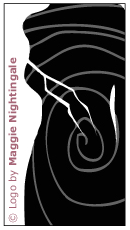Endometriosis affects approximately 10% of women in the UK and it is estimated that 176 million women worldwide suffer from the disease. So how is it that such a common disease is still relatively unheard of (and more importantly, how on earth is it pronounced?!?)
Endometriosis (end-oh-mee-tree-oh-sis) is a disease where tissue similar to that of the endometrium (womb-lining) is found outside of the womb, predominantly within the pelvic cavity.
The most common spots for it to become implanted are:-
- the ovaries
- the fallopian tubes
- the ligaments supporting the uterus
- the internal area between the vagina and rectum (Pouch of Douglas)
- the uterine wall
- the lining of the pelvic cavity (peritoneum)
It can also be found:-
- on the intestine
- on the rectum
- on or inside the bladder
- on the vulva, the vagina or cervix
- inside old abdominal surgical scars
- on the ureters (leading from the kidneys to the bladder)
- on the diaphragm
- in the lungs (very rare)
- in the eyes (very rare)
- in the nose (very rare)
There are 3 distinctive types of endometriosis - superficial, deep infiltrating and endometriomas.
Superficial endometriosis is found mainly on the peritoneum and lies just on the surface. Deep infiltrating endometriosis is where the nodule is more like an iceberg - there's a bit on the surface and then underneath the peritoneum there is a lot more to be found. D.I.E is thought to be less common than superficial endometriosis and if left to fester, the nodules can grow to as large as 5-6cm. An endometrioma (or chocolate cyst) is an endometrial cyst found on the ovaries. These cysts are filled with old blood and can be extremely painful.
I used to think that the endometrial implants bled every month, which then caused the inflammation and scar tissue to be laid down. But instead it seems that endometriosis secretes substances and it is these which the immune system reacts to, causing an inflammatory response. This in turn causes scar tissue to form either as fibrotic tissue surrounding the endometrial lesions or to be laid down as adhesions. Either way it can be extremely painful and can cause further complications, such as infertility or bladder and bowel problems.
People need to be reminded that endometriosis isn't just some silly woman's problem. This is a disease which needs to be taken notice of and people who don't know about it, need to be educated. The sooner a cure is found, the sooner millions of women will be able to get on with their lives without the constant fear of pain and suffering caused by endometriosis.
This is why it's so important that doctors and gynaecologists treat women with respect and dignity when they have been diagnosed with this disease. Parents, siblings, husbands, lovers and friends should all do the same. The more help and support we are given, the more likely it is that we are able to cope with our symptoms and perhaps even beat this disease at its own game.
So, if you are reading this, and know someone out there who suffers from endometriosis, please cut them some slack. Living with endo is no joke. Trust me, I should know.
Accept your limitations
Be aware of your body and listen to it
